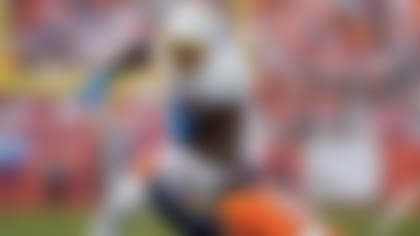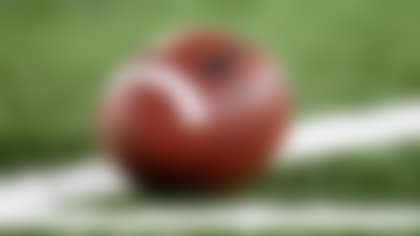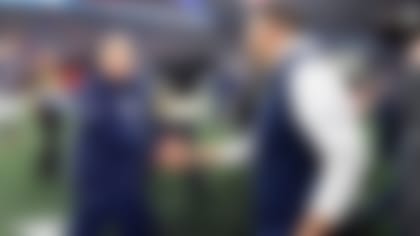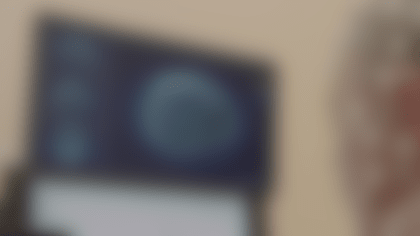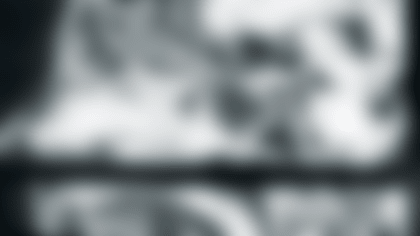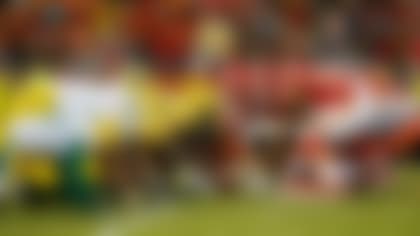Summary
In 2013, GE and the NFL teamed up to launch the Head Health Initiative, a four-year, $60 million collaboration to accelerate diagnosis and improve treatment for traumatic brain injury. The multi-year collaboration includes two components:
A four-year, $40 million research and development program aimed at developing next-generation brain imaging technologies that take a whole-brain approach to improving the diagnosis and treatment of patients with mild traumatic brain injury.
A two-year, open innovation challenge fund to invest up to $20 million in grants to scientists, academics, experts and entrepreneurs worldwide across three innovation challenges aimed at spurring disruptive advancements to better understand, diagnose, and protect against traumatic brain injury. The National Institute of Standards and Technology (NIST) and Under Armour are both supporting this effort. Results include potentially revolutionary innovations such as a simple blood test to aid in the detection of traumatic brain injury, a turf under-layer that absorbs impact and other new energy-absorbing materials designed to better withstand force and protect against concussions.
Imagining the Future
Through its collaboration with GE's Magnetic Resonance division, the NFL is supporting clinical research into the use of MRI as a tool for advanced methods of imaging and quantifying brain function—which could transform science around brain injury, benefiting not only football and other sports but also society more broadly.
Clinical studies at some of the nation's leading institutions are informing the development of this new technology, including University of California San Francisco, Houston Methodist, Hospital for Special Surgery, Medical College of Wisconsin, University of Pittsburgh Medical Center Sports Medicine Concussion Program, University of Michigan and University of Miami Miller School of Medicine.
Positive outcomes of these trials will potentially result in new methods of medical imaging specific for the evaluation of concussions and management of patients. This exciting work continues to be experimental and is part of a four-year project.
Encouraging New Ideas
The Head Health Initiative combines creativity in the laboratory with financial incentives—and a unifying desire to improve public health.
GE teamed up with the NFL to start the effort. The first round launched in the spring of 2013.
When the partnership was announced in 2013, GE Chairman and CEO Jeff Immelt said:
"For all the advances in science, our knowledge of the brain is far behind that of nearly every other organ in the body. With this initiative, we will advance our research and apply our learning to sports-related concussions, brain injuries suffered by members of the military and neurodegenerative diseases such as Alzheimer's and Parkinson's."
Immelt continued: "Advancing brain science will help families everywhere."
The Challenges
So far, the Head Health Initiative has called for ideas and research for three separate challenges.
More than 1,000 concepts have been submitted. These ideas have come from 30 countries.
Head Health Challenge I
Six grand prize winners were chosen during Challenge I when organizers were looking for new tools to identify concussions:
- Banyan Biomarkers, Inc. San Diego, California
Banyan Biomarkers, Inc. is developing a point-of-care blood test to rapidly detect the presence of mild and moderate brain trauma to improve the medical management of head injured patients. Researchers from Banyan Biomarkers and the University of Florida are collaborating on a sports concussion study to analyze biomarkers, neurocognitive testing, and neuroimaging on student athletes. Banyan expects twenty blood-based markers for head injury will be added to the study in the coming year which will help provide researchers a better understanding of the biochemical pathways that occur in the brain after a concussion and, ultimately, assist to develop treatments to improve clinical outcomes.
- BrainScope Company, Inc. Bethesda, Maryland
BrainScope, in collaboration with the Purdue Neurotrauma Group, conducted a study of athletes using both neuroimaging tools as well as BrainScope's urgent care, handheld, EEG-based traumatic brain injury detection technology. The research supported the utility of the BrainScope markers as a surrogate for neuroimaging and revealed its potential to identify those with increased vulnerability and susceptibility to concussion. BrainScope is developing a concussion assessment system to identify concussed from non-concussed patients and provide a method for assessment of concussed patients over time. This system in development is intended for use by clinicians from initial point-of-care assessment to rehabilitation of head-injured patients.
- Medical College of Wisconsin, Milwaukee, Wisconsin
Using MRI scanning technology, researchers at the Medical College of Wisconsin are determining the direct effects of sports-related concussions on brain structure and function. The aim of the study is to advance the discovery of more objective biomarkers to assist in diagnosing concussion, determining when an athlete's brain has fully recovered, and clinical decision making about the athlete's fitness to return to play after a concussion.
- Quanterix, Lexington, Massachusetts
Quanterix has developed a simple blood test to aid in the detection of traumatic brain injury. Using its Simoa technology, Quanterix is able to measure molecular signatures (biomarkers) of brain injury in blood. Quanterix is working to detect and quantify mild to moderate traumatic brain injury almost immediately after the injury has taken place, which will help to better predict the long-term prognosis of individuals who have undergone acute and repetitive injuries. Quanterix's goal is to provide a blood test that speeds the diagnosis of a concussion in a clinical setting and on the sidelines in a sports arena, therefore improving and accelerating treatment.
- University of California, Santa Barbara (UCSB), Santa Barbara, California
The UCSB Brain Imaging Center, in collaboration with faculty in the computer sciences, is developing statistical methods to detect damage to the deep connections in the brains of patients after mild head injury. Recent breakthroughs in both MRI scanning and data analysis make it possible to detect subtle brain changes in individual patients after mild concussions. This approach will be tested with clinical data from collaborators using a variety of MRI scanners.
- University of Montana, Missoula, Montana
Researchers at the University of Montana have identified blood-based biomarkers that indicate how the brain reacts following a traumatic brain injury (TBI). Research over the past year has demonstrated changes in specific plasma microRNAs (micro ribonucleic acids) in TBI patients over a period of several months. The identification and validation of these markers could help with diagnosis and assessing recovery after a head injury as well as testing the effectiveness of new treatments for TBI.
Head Health Challenge II
Contestants in this challenge worked on ways to improve the detection and prevention of brain injury.
After receiving 475 submissions, the NFL, GE and Under Armour worked with the Johns Hopkins Department of Engineering to narrow the list of potential winners. From there, a group of expert judges reviewed the applications, convening for a day and a night of debate and discussion at Under Armour's headquarters in Baltimore.
Grand prize winners for Challenge II were announced at the end of 2015:
- Army Research Laboratory, Aberdeen, Maryland
Army Research Laboratory created rate-dependent tethers that allow free motion at low speeds, but provide high force resistance during high-speed events. ARL proposes using these smart materials to connect the head to the torso, allowing voluntary head movement during sports action, while minimizing sudden accelerations caused by high speed collisions, often associated with concussions.
- University of Washington, Seattle, Washington
University of Washington is developing a football helmet that boasts a novel impact absorbing structure that mitigates forces associated with head injury.
- Viconic Sporting, Detroit, Michigan
Viconic Sporting developed an underlayer for synthetic turf systems that will make fields safer for those who play on them. Viconic's technology is widely used for impact management in the automotive and sporting industries and in the U.S. Military. Viconic will further explore the relationship between optimized head impact protection and the frequency of lower limb injuries in an effort to provide the synthetic turf industry a tool to specify systems that maximize player safety and minimize safety costs.
Head Health Challenge III
For this challenge, the federal government in the form of the National Institute of Standards Technology (NIST) joined in the Head Health Initiative.
The aim of Head Health Challenge III was the discovery or development of new or repurposed materials that can do a better job of absorbing or mitigating force. Materials could be introduced into football equipment—helmets and pads—as well as many other sports and recreational consumer products to advance the safety characteristics and improve the health of athletes.
NIST provided its expertise to design a test methodology to examine the submissions and create standards for the rest of the industry to follow.
A collaborative team of materials designers led by Dynamic Research Inc. was selected as the grand prize winner for Challenge III in September 2017.
The winning research team was awarded $500,000 for its new material system of protective gear for athletes, first responders, military personnel, and others who face potential impact injuries.
One hundred and twenty-five ideas were submitted for the competition. Round 1 finalists—each awarded $250,000— include:
- Alba Technic, Inc., developing a shock-absorbent honeycomb material with an outer layer that diverts energy from a fall or hit.
- Charles Owen, Inc., creating cellular structures that use a stacked, origami-like design to optimize energy absorption.
- Corsair Innovations, developing a textile that uses tiny, spring-like fibers to repel rotational and linear impacts in order to reduce potential damage.
- Dynamic Research, Inc., collaborating with 6D Helmets LLC to improve 6D's single-impact suspension technology for use in repeated impact conditions.
- The University of Michigan, designing a lightweight, multi-layered composite to help limit the force of repeated impacts.


